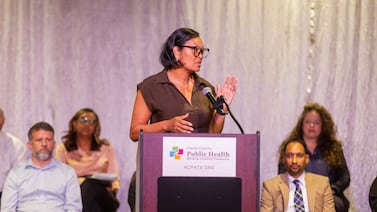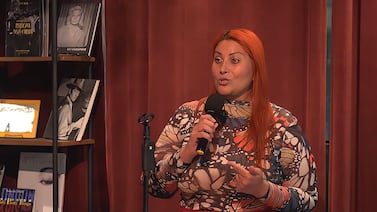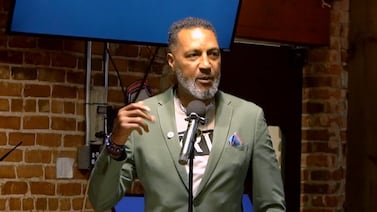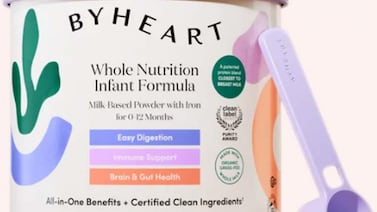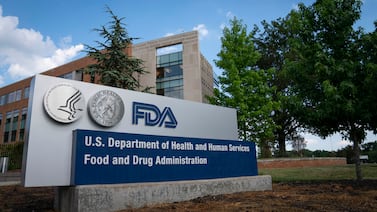This article originally appeared at Your Local Epidemiologist New York. Sign up for the YLE NY newsletter here. Public health, explained: Sign up to receive Healthbeat’s free New York City newsletter here.
A little more than a third of all New Yorkers across the state — 35% —get health care through Medicaid. Over the next couple of months, Congress will determine how much to cut the federal Medicaid budget, and with it, how many millions of New Yorkers will keep their health insurance or lose it. Let’s break it down.
Let’s back up: Medicaid 101
Medicaid is a joint federal-state health insurance plan that covers low-income kids, pregnant women, babies, adults with disabilities, and many seniors. It pays for emergency room visits, hospital stays, routine check-ups, prescriptions, and most long-term care.

It’s the nation’s biggest insurer — 1 in 5 Americans (~78 million) and nearly 2 in 5 children rely on it — and the largest source of federal dollars for states. It’s also gaining significant bipartisan support. A recent KFF poll found 77% of Americans support Medicaid.
The 2014 Affordable Care Act let states widen Medicaid eligibility, or “expand Medicaid.” Forty states — including New York — signed on, extending coverage to about 20 million low-income adults.
Congress is proposing major budget cuts that will likely affect Medicaid
The Senate and House are moving forward with a blueprint for a federal budget (a draft not set in stone) that outlines cutting $880 billion over 10 years from the House Energy and Commerce Committee, which manages Medicaid. Hitting that target would almost certainly require deep Medicaid cuts. (For context, federal Medicaid spending was ~$600 billion in 2024.)
How Washington could cut Medicaid:
- Work requirements. Some propose requiring adults on Medicaid to be employed. This could cut spending by $100 billion over 10 years, but could cause ~1.5 million people to lose coverage. In Arkansas, after implementing a work requirement, 18,000 adults lost insurance, over 60% delayed medications due to cost, and there was no increase in employment.
- Reducing the amount the federal government contributes to states for Medicaid. The federal government now covers 50-77% of a state’s Medicaid costs (50% for New York). Lowering that match shifts billions to state budgets or cuts benefits.
- Reducing Medicaid expansion match. The federal government currently picks up 90% of the costs for expansion; trimming that share means states would pay more.
Medicaid cuts would affect New Yorkers
Roughly ~35% of New Yorkers depend on Medicaid — one of the highest shares of any state and far above the national average of about ~20%. In New York City, just over half of residents are enrolled.
Medicaid enrollment is high in New York because:
- Poverty is high. In New York City, 25% of residents live in poverty; statewide, the rate is 13.9% versus 12.8% nationally.
- There are large, high-need populations, including those with disabilities, seniors needing long-term care, and immigrants.
- Many New Yorkers lost jobs during the pandemic, losing work health care plans or the means to pay for insurance.
- New York expanded eligibility, providing coverage for more New Yorkers.
New York’s Medicaid program allows low-income adults with incomes up to 250% of the Federal Poverty Level to qualify ($37,650 for a single adult and $78,000 for a family of four in 2024). Coverage now also extends to undocumented seniors (65+), pregnant moms, and newborns— Medicaid funds nearly half (47%) of all New York births.
Exactly how New York will fare won’t be clear until Congress settles the budget, but with millions here relying on Medicaid, any cut will hit hard.
Cutting federal Medicaid funding could:
- Reduce the number of people receiving health benefits
- Eliminate certain health services from being covered
- Reduce rates paid to healthcare providers for services they deliver
- Drive up health care costs as providers absorb uncompensated care
- Shift costs to state and city budgets
Gov. Kathy Hochul warns that as many as 1.8 million New Yorkers could lose coverage — a worst-case estimate, but even a smaller hit would ripple widely.
When coverage disappears, many will make tough decisions, like delaying or not getting care, or paying out of pocket. This can push illnesses to later, costlier stages — cancers can advance and become harder to treat, and untreated infections, like tuberculosis, have a chance to spread more widely. Those who do get treatment but can’t afford it can go bankrupt. Providers also feel the squeeze: lower Medicaid payments mean leaner budgets, salary cuts, or potential layoffs.
At the center of the debate: funding and fraud
Supporters of Medicaid cuts see this as a way to reduce federal spending. Without a doubt, health care is a big-ticket item for federal and state budgets. In 2024, New York state spent more than $101 billion on Medicaid, and its costs are climbing faster here than in most states.
While most Medicaid dollars are spent exactly as intended, fraud is a real issue. Fraud examples can include:
- Sharing or “renting” Medicaid cards
- Reselling medical equipment or medications provided through Medicaid
- Billing for services never provided or intentionally billing for more expensive ones
In 2024, for example, eight people in Brooklyn were charged with committing fraud worth $68 million after they paid Medicaid recipients cash to falsify requests for services they never received.
These abuses leave lawmakers and the public appropriately angry. Medicaid fraud siphons funds meant to provide health care to vulnerable patients. The challenge is preventing bad actors without cutting access for people who rely on the program. Broad, sweeping cuts may reduce spending, but they do little to actually stop fraud.
What happens next?
- Spring-summer 2025: Congressional committees draft bills that must hit the savings/budget cut targets in the budget proposal. The House Energy and Commerce Committee will aim to cut $880 billion, with large amounts likely from Medicaid.
- Late summer 2025: Congress will vote on committee budget bills.
- October 2025: The final bills land on the president’s desk for signature or veto.
What you can do
- Check in on neighbors who may be on Medicaid or need help with renewal forms. A little paperwork can help keep someone insured. The New York State Medicaid Help Line is (800) 541-2831.
- Call your senators and congressional representatives to advocate for the issues that matter to you. (Find their contact information here.) Some apps provide representative info as well as scripts for specific topics. You can also join a YLE webinar on Friday, May 2, to learn how to influence health policy. Find the details here.
- Stay informed. I’ll be posting any updates on how this plays out in Congress.
Bottom line
Medicaid isn’t just a budget item, it’s a health lifeline for more than a third of New Yorkers. If the proposed $880 billion budget cut goes through on the federal level, many New Yorkers will likely lose their health insurance. But things aren’t set in stone yet as Congress still has to iron out the details. There’s still time to contact your representatives, and tell them what matters to your community—your voice has power.
Love,
Your New York Epi
Dr. Marisa Donnelly, PhD, is an epidemiologist, science communicator, and public health advocate. She specializes in infectious diseases, outbreak response, and emerging health threats. She has led multiple outbreak investigations at the California Department of Public Health and served as an Epidemic Intelligence Service Officer at the Centers for Disease Control and Prevention. Donnelly is also an epidemiologist at Biobot Analytics, where she works at the forefront of wastewater-based disease surveillance.


